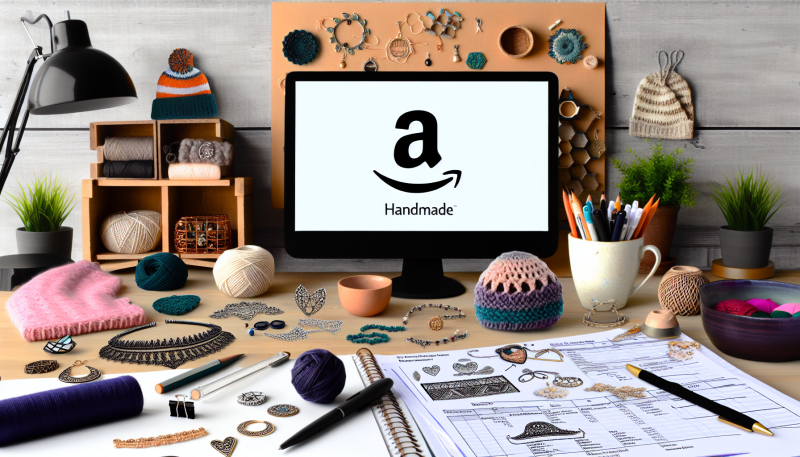Within the e-commerce realm, Amazon stands as a beacon of opportunity for entrepreneurs eager to tap into a diverse, ever-expanding marketplace. Among the various strategies to thrive on Amazon, launching a private label has emerged as a particularly lucrative path. This approach involves selling products under your own brand that are manufactured by others, allowing for significant flexibility and potential for profit maximization. In this detailed exploration, we delve into the core strategies to maximize your success with an Amazon private label.
Understanding the Amazon Private Label Landscape
To effectively navigate the Amazon private label journey, an initial comprehension of the marketplace’s structure is crucial. Amazon’s vast consumer base is matched by a fiercely competitive seller environment. Success in this arena isn't solely based on having a quality product; it also depends on your ability to differentiate your brand, position your offerings appealingly, and execute strategic marketing. A deep understanding of Amazon's algorithms, policies, and consumer behavior patterns is instrumental for anyone looking to excel.
Finding Your Niche
Identifying a profitable niche is the cornerstone of building a successful Amazon private label. This involves meticulous research to discover products with high demand, relatively low competition, and good profit margins. Utilizing tools like Jungle Scout, Helium 10, or Amazon's own Best Sellers list can provide invaluable insights. The goal is to uncover niches that are not saturated but have a consistent customer base eager for quality products.
Product Sourcing and Quality Control
Once a viable niche is identified, the next critical step is sourcing products that meet high-quality standards. Whether you plan to manufacture domestically or abroad, focusing on product quality can significantly affect customer satisfaction and reviews, ultimately impacting your brand's reputation on Amazon. Building a good relationship with manufacturers and insisting on product samples for quality checks before bulk ordering are best practices to ensure the integrity of your private label products.
Optimizing Product Listings for Maximum Visibility
Your product listings are the primary means through which customers interact with your brand on Amazon. An optimized product listing includes high-quality images, detailed and keyword-rich product descriptions, engaging titles, and competitive pricing. Incorporating SEO best practices by researching and utilizing keywords that potential customers are searching for can vastly improve your product’s visibility and attractiveness.
Moreover, leveraging Amazon’s A+ Content feature allows sellers to enhance their product descriptions with rich text and images. This can be particularly beneficial in telling your brand’s story and highlighting product features in a more compelling manner.
Employing Amazon Advertising to Boost Sales
Investing in Amazon’s advertising tools can provide a significant boost to your product visibility and sales. Amazon offers various advertising solutions such as Sponsored Products, Sponsored Brands, and Sponsored Display ads. These tools allow you to target potential customers based on specific keywords, products, or interests, making it easier to drive traffic to your listings and increase sales. A strategic approach to Amazon advertising, coupled with ongoing analysis and optimization, can yield exceptional returns on investment.
Generating and Leveraging Customer Reviews
Customer reviews are a critical factor in establishing trust and credibility on Amazon. Positive reviews can significantly enhance your product’s appeal and influence purchasing decisions. To generate more reviews, consider leveraging Amazon’s Early Reviewer Program, providing exceptional customer service, and gently encouraging customers to leave feedback. However, it’s crucial to adhere to Amazon’s guidelines regarding reviews to avoid any potential penalties.
Maintaining Competitive Pricing
The price of your products can greatly influence their success on Amazon. It is essential to maintain competitive pricing while ensuring a good profit margin. This requires regularly monitoring competitors’ pricing strategies and adjusting your prices accordingly. Utilizing automated repricing tools can help maintain competitiveness without constant manual adjustments, enabling you to stay ahead in a dynamic market environment.
Cultivating Brand Loyalty
Building a loyal customer base is invaluable for sustained success on Amazon. This involves creating a strong brand identity, delivering consistent quality, and engaging with your customers beyond the initial sale. Offering excellent customer service, responding promptly to queries and concerns, and providing value through informative content can nurture a relationship with customers that transcends individual transactions, fostering long-term loyalty.
Amazon provides various tools and avenues to aid sellers in establishing and promoting their private label brands. By strategically navigating these resources and adhering to the outlined strategies, entrepreneurs can significantly enhance their chances of success in the competitive Amazon marketplace. More than just selling products, succeeding with an Amazon private label requires a holistic approach that encompasses market research, brand building, customer engagement, and continuous optimization.
Boosting Your Amazon Private Label for Profit Maximization: A Comprehensive Guide
Welcome to the definitive guide on leveraging Amazon's private label opportunities for entrepreneur success. Amazon's marketplace offers a goldmine of possibilities for savvy entrepreneurs looking to sell their branded products to a global audience. By adopting a strategic approach towards your Amazon private label venture, you can unlock substantial profit potential. This guide is designed to walk you through essential strategies that can catapult your Amazon private label brand to new heights.
Decoding the Amazon Private Label Ecosystem
Understanding the Amazon private label framework is the first step towards achieving success. Amazon's platform is incredibly vast, hosting millions of products and sellers, which means competition is high. However, with the right strategies, you can differentiate your brand and carve out a lucrative niche. Knowledge of Amazon's algorithms, seller policies, and consumer buying habits is crucial. This foundational insight sets the stage for effective brand positioning and marketing execution on the platform.
Selecting the Perfect Niche
Finding the right niche is paramount in the Amazon private label business. This process involves thorough research to pinpoint products that are in demand but face minimal competition, alongside good margins. Leveraging tools such as Helium 10, Jungle Scout, or Amazon's own data can shed light on untapped niches ripe for entry. The ideal niche should balance demand with competition, offering a clear path to visibility and profitability.
Sourcing High-Quality Products
After identifying a profitable niche, the focus shifts to sourcing products that meet stringent quality standards. Whether you're manufacturing locally or internationally, product quality is non-negotiable as it directly influences customer satisfaction and, in turn, your brand's reputation. Establishing solid relationships with manufacturers and conducting thorough quality checks before placing bulk orders are vital steps in ensuring product quality.
Optimizing Your Listings for Enhanced Visibility
The heart of your Amazon private label's online presence is its product listings. An effective listing combines high-quality images, detailed descriptions laden with strategic keywords, competitive pricing, and captivating titles. Embracing SEO best practices by targeting keywords your potential customers are searching for can dramatically improve your product's visibility. Additionally, Amazon's A+ Content feature is a powerful tool for enriching your product descriptions with detailed text and images, making your offerings more attractive to shoppers.
Amplifying Reach with Amazon Advertising
To further increase visibility and sales, leveraging Amazon's advertising options is key. Amazon provides several advertising models, including Sponsored Products, Sponsored Brands, and Sponsored Display, enabling sellers to target customers precisely. A thoughtful approach to Amazon advertising, backed by continuous analysis and refinement, can significantly boost your return on investment.
Harvesting and Utilizing Customer Reviews
Customer reviews play a vital role in building trust and persuading potential buyers. Positive feedback enhances your product's appeal and can influence shopper decisions. Tactics to garner more reviews include participating in Amazon’s Early Reviewer Program and delivering exceptional customer service. Remember, adherence to Amazon's review policies is essential to avoid any violations.
Maintaining a Competitive Edge with Pricing
Competitive pricing is a critical element of your product strategy on Amazon. It's essential to balance affordability for your customers with maintaining healthy profit margins. Regularly monitoring competitors' pricing and utilizing automated repricing tools can help maintain this balance, ensuring your offerings remain attractive to potential buyers.
Building and Sustaining Brand Loyalty
A loyal customer base is the bedrock of long-term success on Amazon. Establishing a robust brand identity and delivering consistent value are key to cultivating loyalty. Engaging with your customers through stellar customer service and informative content can transform one-time buyers into brand advocates, fostering a loyal community around your brand.
By diligently applying the strategies detailed in this guide, Amazon private label sellers can significantly improve their market positioning and profitability. Success on Amazon goes beyond mere transactions; it involves comprehensive market analysis, immersive brand building, active customer engagement, and relentless pursuit of excellence in all dimensions of the business.






